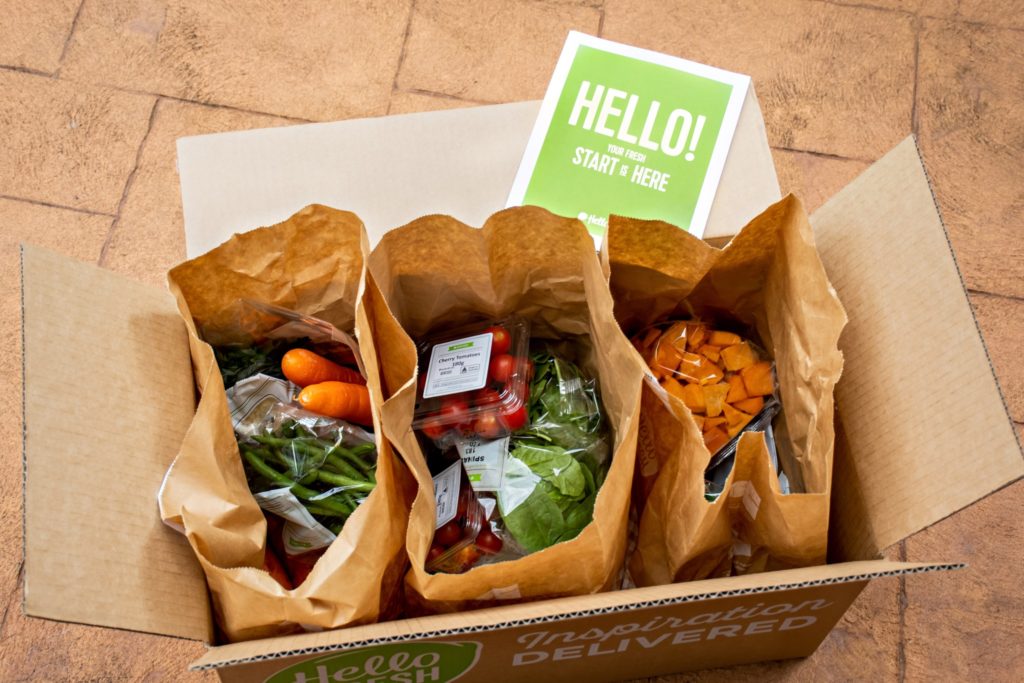Subscription services have an entirely different meaning as COVID-19 impacts the world. They originally stood for convenience, innovation, money saving, and while they still do, specific services like food delivery subscriptions now bring people a sense of safety knowing they do not have to leave their homes.
Just set it and forget it. It’s the promise of no-brainer convenience in this familiar sales hook that perhaps holds the secret to why subscription services are skyrocketing. The subscriber-based model definitely wasn’t breaking news to traditional marketers, but in the world of online selling, the growth in this particular sector is certainly a phenomenon to tune into.
The rise of subscription services
Increasing numbers of businesses and industries are transitioning away from conventional retail in favor of subscription models, and many wildly successful businesses have broken out using this tried and true selling program in brand new ways.
Take TV for example, Netflix and Hulu and other streaming platforms for shows and movies have been front and center in the race for entertainment on a drip. Spotify is a prominent name in subscription music, the ubiquitous Amazon Prime for all manner of shopping, meal kits are signed up for and delivered from BlueApron or HelloFresh, makeup from Birchbox, Audible for audiobooks, and the list goes on and on.

According to the eBusiness Institute, the subscription market has gone up more than 100 percent every year for the last five, making the leap from a multi-million dollar industry to a multi-billion dollar one. Many can agree that the subscription trend has paid off as people have been adapting to current unprecedented times and utilizing them in place of going out to their normal retailers for necessities that have since been temporarily closed.
Subscription business models
Subscription businesses tend to fall into one of three models. The first is a simple recurring purchase, usually of some essential household item that runs out at a predictable interval, like razors from Dollar Shave Club, printer ink from HP’s Instant Ink, or a recurring Amazon order. Next comes a slightly more varied ‘curated choice model’, where customers get some control over what they receive month-to-month out of a given selection. Both Birchbox and Blue Apron fit into this model. Finally, there is the no-holds-barred open library model ala Netflix or Spotify, where users get their pick from a huge selection every time they use the service.

What do consumers get out of all of this? Convenience, value, and simplicity, without sacrificing flexibility, customization, and choice are some of the reason’s consumers are utilizing subscriptions for their needs. They drive value by helping consumers cut through the dizzying array of choices available to them for their every want and need by offering a curated selection based on their preferences.
By combining this with personalization, appealing packaging, and the occasional surprise, these businesses guarantee the great experience that modern consumers have come to expect. All of this is driven by a shift in consumer mentality from ownership to access – modern consumers want to ‘rent’, not buy, their products and services.
This is a shift that has gone hand-in-hand with market shifts that have led to a focus on consumer relationships rather than simply on products or services. Apple, Uber, and Adobe have all relatively recently undergone shifts from being product or service based to having subscription services, sometimes exclusively.
Getting started with subscriptions
Just because the industry is growing doesn’t mean that subscription businesses are an easy win, however. One consequence of the decision to use a subscription model rather than a very transactional, one-time purchase model is that the focus has to shift away from customer acquisition and towards retention. Meal delivery services rely on customer retention and subscriptions. For example, a customer goes to blueapron.com to get started on their meal delivery subscription. They fill out all the required information and payment and within days a box is delivered to their door, ready for a week full of meals. With this, however, Blue Apron now has a job to make sure the customer continues to order week after week and keeps their subscription active. In other words, part of being able to run a successful subscription model is being able to consistently provide excellent quality and value that keeps consumers engaged and needing more, otherwise you risk losing them to the myriad other brands that are constantly courting them.
The appeal of the subscription model
So what makes the subscription model appealing to businesses, other than the fact that consumers like it? The greater upside of customer lifetime value is worth fighting for, and businesses who figure out how to deliver what customers want in an experience they enjoy stand to see the rewards not only rolling forward, but also ramping up.
Another incentive for businesses is the visibility and predictability it gives to cash flow. According to one study conducted by Ordergroove, which analyzed their clients in an attempt to distinguish the difference in spending behavior between consumers who were engaged in some kind of subscription and those who were not, it was found that subscribers saw a 60% or more increase in their personal spending in the six-month period after enrolling.
Even more dramatically, according to Ordergroove, clients who followed their best practice recommendations for running a subscription service saw a 400% gain in revenue growth. Businesses don’t have to wonder how much money you are going to bring in during a given time frame – you can simply examine how many active subscribers you have and you will know the lower limit, which is invaluable when trying to plan big initiatives like a new marketing campaign.
Which benefits of the subscription model you should choose to emphasize for your business depends a lot on whether your proposed subscription belongs to the category of necessity subscriptions or indulgence subscriptions. When you are providing a necessary staple, the key lies in simplicity, convenience, and value.
Car insurance is a classic example of this, even though it predates the current e-commerce driven subscription economy, which is why car insurance ads are all about saving money. On the other hand, indulgence subscriptions are about exactly that. Cost is far less important since the customer is already there to treat themselves – the key is in delivering something that they feel is a treat, which means keeping things interesting, delivering on the promise of a delightful experience, and knowing your niche inside and out. Indulgence subscriptions also present a great opportunity for strategic partnership with other brands.
There’s no setting and forgetting subscription models. Cooking up and delivering exciting offers and excellent experiences with nearly perfect consistency is a pretty tall order. But once you’ve figured out the secret sauce that will differentiate your brand’s subscription strategy, you may well have a recipe for success.
Contact us to learn how you can start promoting your subscription offering.
